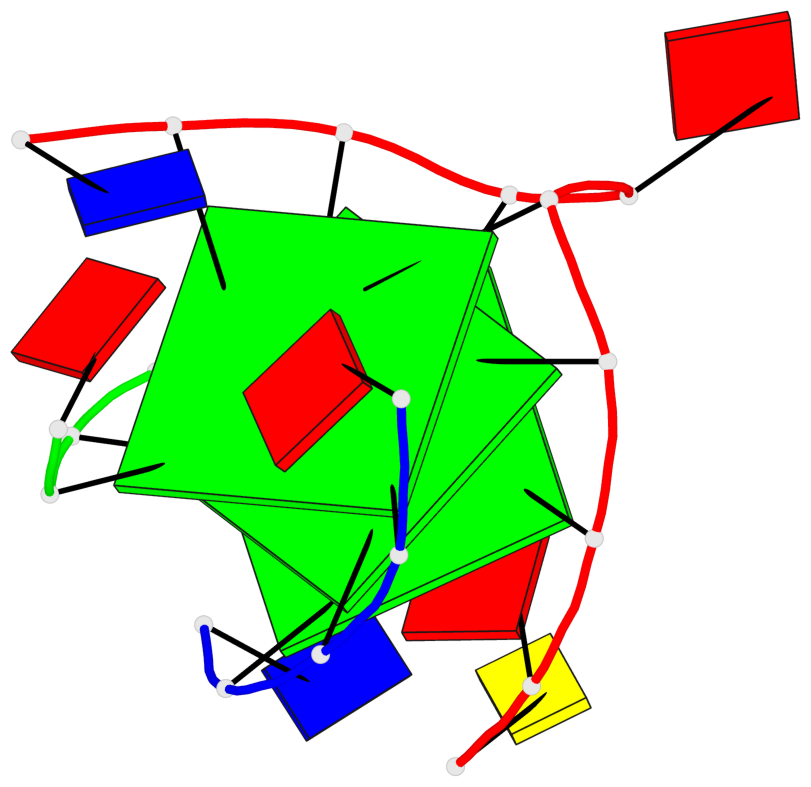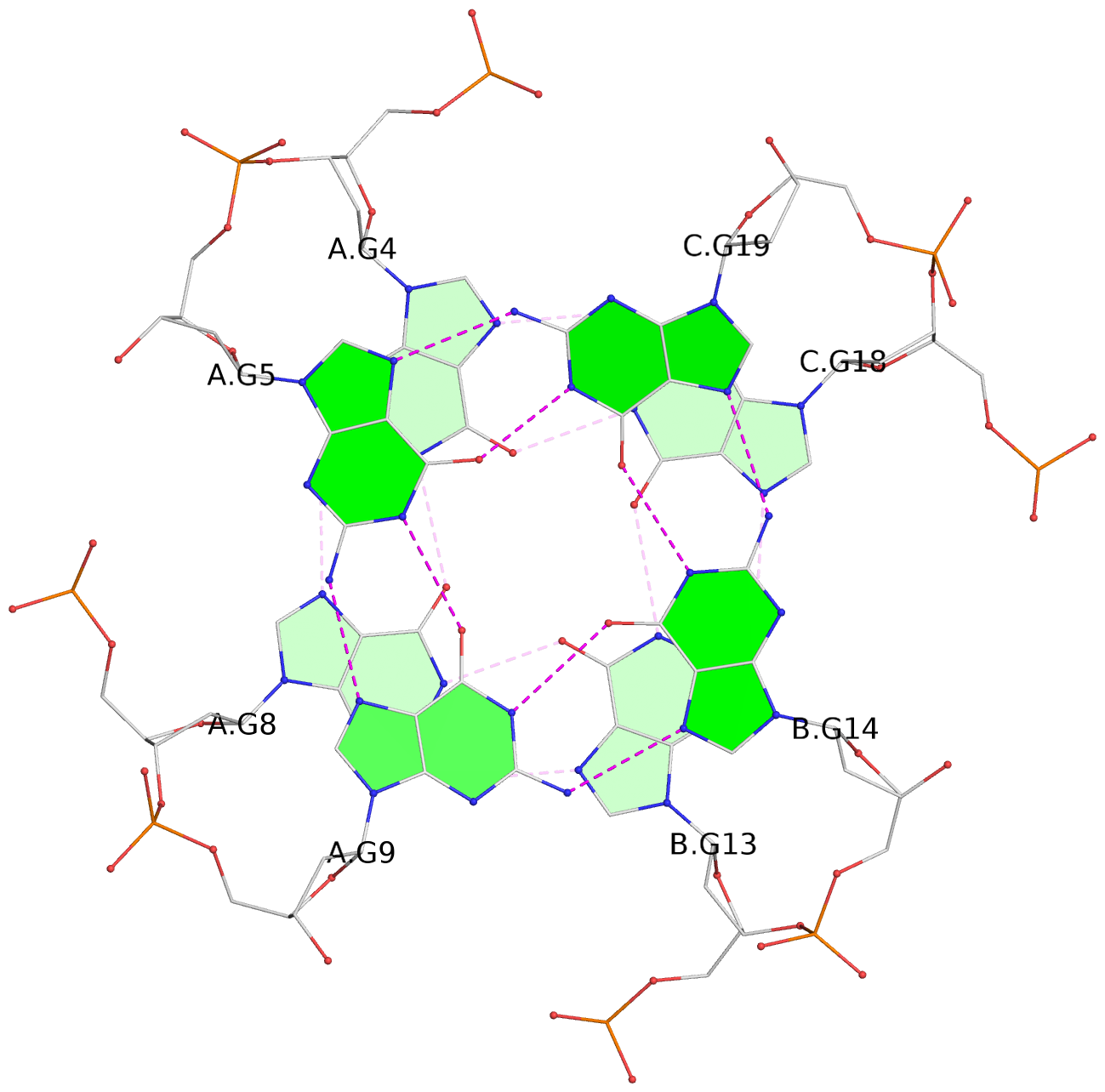Detailed DSSR results for the G-quadruplex: PDB entry 7v6v
Created and maintained by Xiang-Jun Lu <xiangjun@x3dna.org>
Citation: Please cite the NAR'20 DSSR-PyMOL schematics paper and/or the NAR'15 DSSR method paper.
Summary information
- PDB id
- 7v6v
- Class
- DNA
- Method
- NMR
- Summary
- Trimolecular g-quadruplexes consists of a hairpin motif and two short chains
- Reference
- Hu W, Jing H, Fu W, Wang Z, Zhou J, Zhang N (2023): "Conversion to Trimolecular G-Quadruplex by Spontaneous Hoogsteen Pairing-Based Strand Displacement Reaction between Bimolecular G-Quadruplex and Double G-Rich Probes." J.Am.Chem.Soc. doi: 10.1021/jacs.3c05617.
- Abstract
- Bimolecular or tetramolecular G-quadruplexes (GQs) are predominantly self-assembled by the same sequence-identical G-rich oligonucleotides and usually remain inert to the strand displacement reaction (SDR) with other short G-rich invading fragments of DNA or RNA. Appealingly, in this study, we demonstrate that a parallel homomeric bimolecular GQ target of
- G4 notes
- 3 G-tetrads, 1 G4 helix, 1 G4 stem, parallel(4+0), UUUU
Base-block schematics in six views
List of 3 G-tetrads
1 glyco-bond=---- sugar=---- groove=---- planarity=0.337 type=bowl nts=4 GGGG A.DG3,A.DG7,B.DG12,C.DG17 2 glyco-bond=---- sugar=---- groove=---- planarity=0.322 type=bowl nts=4 GGGG A.DG4,A.DG8,B.DG13,C.DG18 3 glyco-bond=---- sugar=---- groove=---- planarity=0.393 type=bowl nts=4 GGGG A.DG5,A.DG9,B.DG14,C.DG19
List of 1 G4-helix
In DSSR, a G4-helix is defined by stacking interactions of G-tetrads, regardless of backbone connectivity, and may contain more than one G4-stem.
Helix#1, 3 G-tetrad layers, inter-molecular, with 1 stem
List of 1 G4-stem
In DSSR, a G4-stem is defined as a G4-helix with backbone connectivity. Bulges are also allowed along each of the four strands.









